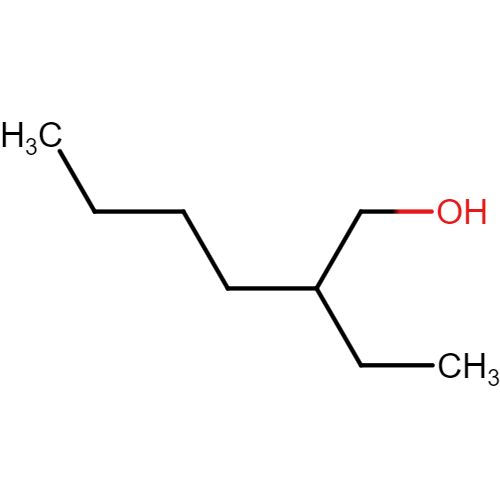2-Ethylhexanol
| Compound Structure: |

|
||||||||||||||||||||||||||||||||||||||||||||||||
|---|---|---|---|---|---|---|---|---|---|---|---|---|---|---|---|---|---|---|---|---|---|---|---|---|---|---|---|---|---|---|---|---|---|---|---|---|---|---|---|---|---|---|---|---|---|---|---|---|---|
| Synonyms: | 2-Ethylhexan-1-ol;2-Ethylhexanol;104-76-7;2-ETHYL-1-HEXANOL;2-Ethylhexyl alcohol;1-Hexanol, 2-ethyl-;Ethylhexanol;2-ETHYL HEXANOL;FEMA No. 3151;xi-2-Ethyl-1-hexanol;CHEBI:16011;NSC-9300;DTXCID10605 | ||||||||||||||||||||||||||||||||||||||||||||||||
| Compound ID: | NMPC-235 | ||||||||||||||||||||||||||||||||||||||||||||||||
| PubChem ID: | |||||||||||||||||||||||||||||||||||||||||||||||||
| Molecular Formula: | C8H18O | ||||||||||||||||||||||||||||||||||||||||||||||||
| Canonical SMILES: | CCCCC(CC)CO | ||||||||||||||||||||||||||||||||||||||||||||||||
| InChIKey: | YIWUKEYIRIRTPP-UHFFFAOYSA-N | ||||||||||||||||||||||||||||||||||||||||||||||||
| About the compound: | 2-Ethylhexanol (2-EH) is an organic compound with the chemical formula C8H18O. It is a branched, eight-carbon alcohol and exists as a chiral molecule. This colorless liquid has a distinctive aromatic odor and is typically dark brown in color. It is poorly soluble in water but can dissolve in most organic solvents. 2-Ethylhexanol is used in various industrial applications, and it's produced on a large scale, making it an important chemical compound. Some of its applications include its use as a solvent, as well as in the formulation of flavors and fragrances. Additionally, it serves as a precursor for the production of other chemicals, such as emollients and plasticizers. This compound is naturally encountered in plants, fruits, and wines. It has a distinct odor, which can vary between enantiomers. The R-enantiomer is described as having a "heavy, earthy, and slightly floral" fragrance, while the S-enantiomer is characterized by a "light, sweet floral fragrance." However, it's important to note that the characteristics of this compound can be quite diverse and can vary based on its specific use and application. GHS Hazard Statements • H315 (89.92%): Causes skin irritation [Warning Skin corrosion/irritation] • H319 (99.4%): Causes serious eye irritation [Warning Serious eye damage/eye irritation] • H332 (73.39%): Harmful if inhaled [Warning Acute toxicity, inhalation] • H335 (93.34%): May cause respiratory irritation [Warning Specific target organ toxicity, single exposure; Respiratory tract irritation] |
||||||||||||||||||||||||||||||||||||||||||||||||
| Properties: |
Chemical
and Physical Properties
Source: PubChem |
||||||||||||||||||||||||||||||||||||||||||||||||
| Source Species: |
Plumeria alba |